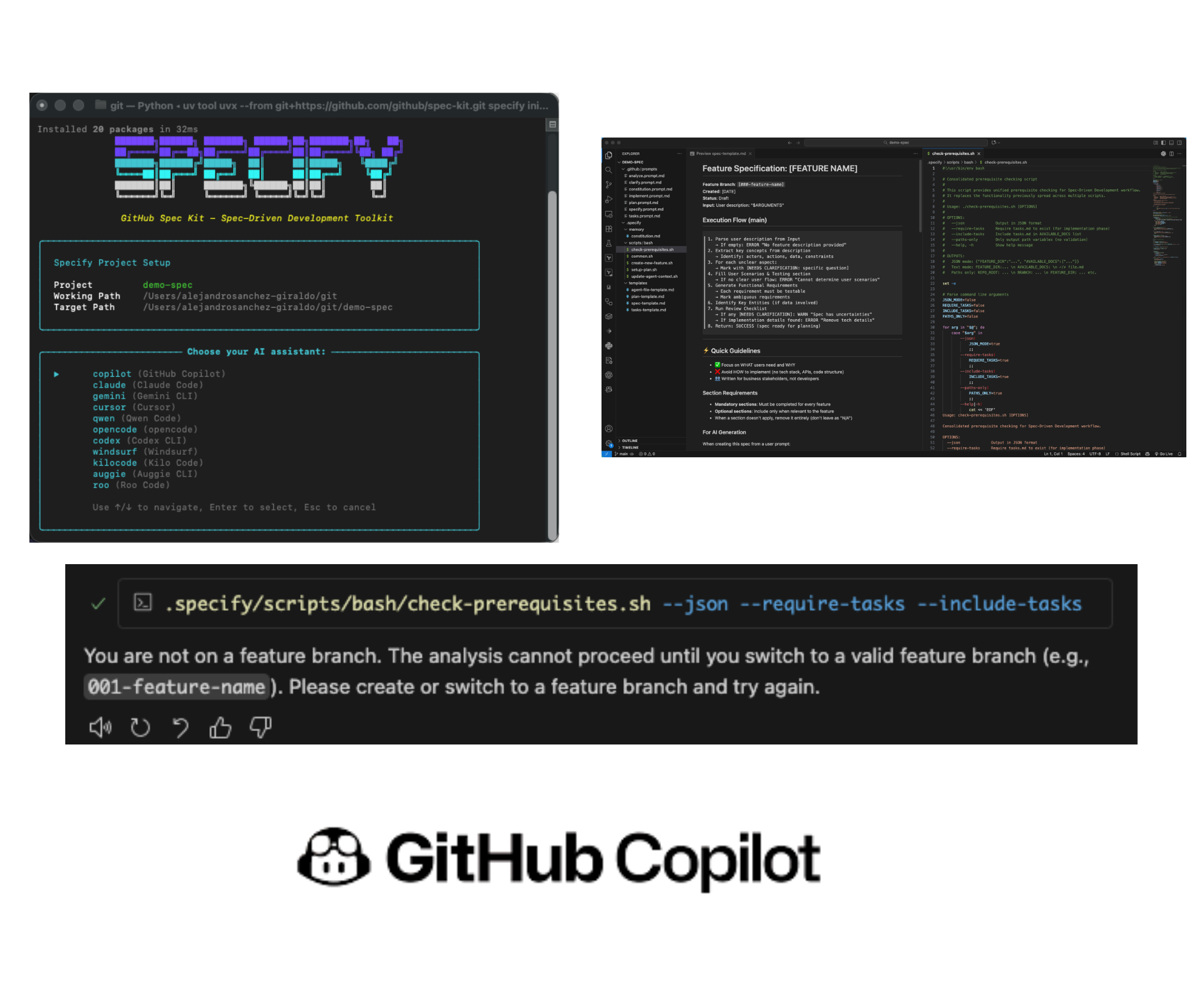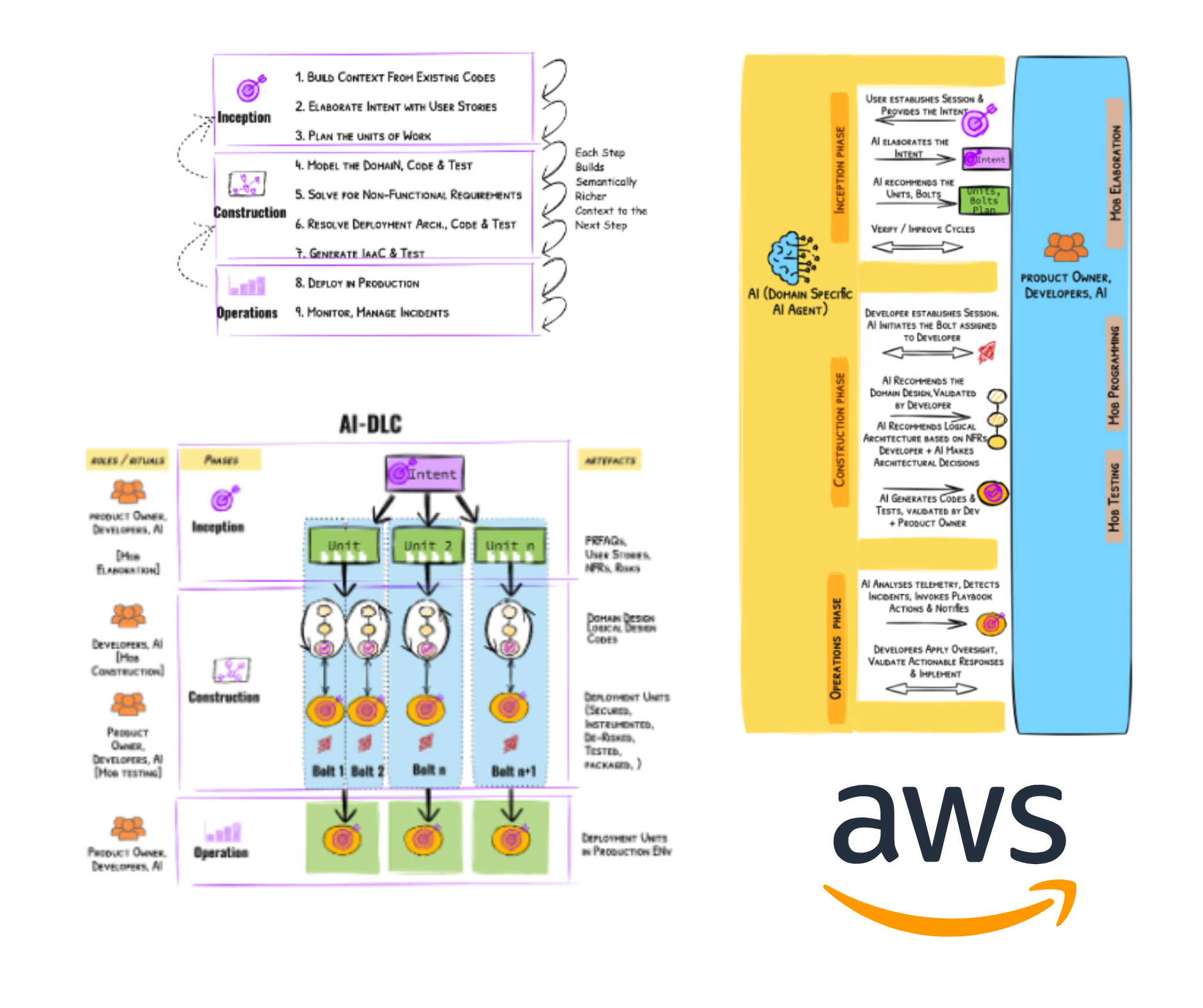Delivery Transformation
We find ourselves at a turning point in software engineering history. The question isn't whether AI will transform your development processes, it's whether your organisation will lead or lag in this transformation.
Software development as we knew it is dead. Bold statement? Perhaps. But with the emergence of revolutionary frameworks like GitHub's Spec-Driven Development and AWS's AI-Driven Development Lifecycle (AI-DLC), we're witnessing the most significant transformation in how software is ideated, designed, built, and delivered since the Agile methodologies.
These aren't just incremental improvements. Organisations adopting these AI-native approaches are reporting staggering results:
- 40 to 60% reduction in delivery timeframes
- 30% higher code coverage
- 35% faster vulnerability remediation
- 2x to 3x velocity gains in team throughput
But here's what most organisations get wrong: They treat this as a technology problem. It's not. It's a fundamental business transformation challenge.
Beyond the Engineering Team: An Organisation-Wide Imperative
The dirty secret about AI-assisted development? Your biggest bottleneck won't be your engineers, they're already experimenting with these tools. The real challenge lies in preparing your entire organisation for a world where:
- Product owners co-author specifications directly with AI, becoming technical architects of user experiences
- Finance teams need to understand AI resource allocation and the economics of "bolt-based" development cycles
- HR departments must recruit for roles that don't yet exist: AI orchestrators, specification architects, and human-AI collaboration specialists
- Operations teams manage blended human-AI workflows where digital workers execute tasks autonomously
- Compliance officers navigate the regulatory implications of AI-generated code in regulated industries
This isn't about adding AI tools to your tech stack. It's about reimagining how value flows through your organisation.
Structure vs. Flow
Two dominant frameworks have emerged, each representing a distinct philosophy of AI-assisted development. Choosing between them isn't just a technical decision, it's a cultural one:
GitHub's Spec-Driven Approach: Precision Through Documentation

Think of this as the architect's method—meticulous, document-driven, with specifications as the single source of truth. The process unfolds in four iterative phases:
- Specify: Start with a high-level user-centric prompt. The AI generates detailed specs focusing on user journeys, success metrics, and edge cases
- Plan: Inject technical constraints (stack, architecture, compliance). The AI outputs a comprehensive blueprint with potential variations
- Tasks: Break the spec and plan into bite-sized, testable chunks
- Implement: AI executes tasks sequentially or in parallel, producing focused code diffs for review
Set-up is straightforward via CLI, then use slash commands like /specify or /plan to guide your AI of choice.
This approach is perfect for organisations that value:
- Clear audit trails and compliance requirements
- Predictable, phased validation processes
- Legacy system modernisation with minimal risk
- Teams that thrive on explicit checkpoints and reviews
AWS's AI-DLC: Orchestrated Collaboration at Scale

This is the conductor's approach—fluid, collaborative, with AI as an active team member throughout the entire lifecycle. AI-DLC's three-phase structure emphasises persistent context and "Mob" sessions—real-time team huddles for validation:
- Inception: AI ingests business intent and generates requirements, stories, and work units. Teams "Mob Elaborate" via AI-generated questions
- Construction: AI proposes architecture, domain models, code, and tests. "Mob Construction" sessions let humans clarify tech decisions on the fly
- Operations: AI handles IaC, deployments, and monitoring, drawing on prior context, with human oversight for tweaks
Integrated deeply with AWS ecosystem tools like Amazon Q Developer and the experimental Kiro, AI-DLC is ideal for organisations prioritising:
- Rapid experimentation and market responsiveness
- Enterprise-scale transformations
- Cloud-native architectures
- Teams comfortable with dynamic, real-time collaboration
The Hidden Risk: Security and Quality at AI Speed
Here's what keeps CTOs awake at night: "What if AI amplifies our mistakes at scale?"
The surprising truth from early adopters: These frameworks actually enhance security and quality when properly implemented:
- Automated enforcement of security policies across all generated code
- Built-in OWASP compliance and vulnerability scanning
- 25-50% reduction in configuration errors
- Continuous validation against specifications
But—and this is crucial—only when organisations invest in proper governance, training, and oversight structures. Quality gates tighten, not loosen, with Spec Kit's diff reviews and Amazon Q's bug-fixing capabilities.
Why Your Organisation Needs Strategic Guidance Now
The competitive divide between AI-native enterprises and traditional software organisations is accelerating, evidenced by Accenture's decision to restructure and phase out employees who cannot transition into AI-enabled roles.
Here's what separates winners from losers in this transformation:
Winners:
- Start with strategy, not tools: They understand their value streams before selecting frameworks
- Invest in universal AI literacy: From C-suite to junior staff, everyone understands AI collaboration
- Build governance early: They establish AI ethics boards and usage policies before problems arise
- Measure what matters: They track value delivery, not just velocity
- Embrace controlled experimentation: They run pilots with clear success metrics
Losers:
- Rush to implement without understanding implications
- Treat AI as an IT department problem
- Ignore the human element of human-AI collaboration
- Underestimate training and change management needs
- Wait for "perfect" solutions before starting
Your 90-Day Roadmap to AI-Native Development
Days 1-30: Assessment and Alignment
- Evaluate current development processes and identify transformation candidates
- Assess organisational AI readiness across all departments
- Define success metrics aligned with business outcomes
- Establish an AI governance framework
Days 31-60: Pilot and Learn
- Select a non-critical project for your first AI-assisted development pilot
- Choose between spec-driven (GitHub) or collaborative (AWS) approaches based on team culture
- Train a tiger team across technical and business functions
- Document learnings and refine processes
Days 61-90: Scale and Systematize
- Expand to 2 to 3 additional projects based on pilot learnings
- Develop organisation-specific AI collaboration playbooks
- Implement security and quality gates for AI-generated code
- Create a centre of excellence for AI-assisted development
The Bottom Line: This Isn't Optional
The transformation to AI-assisted software development isn't a future possibility—it's a present reality. Organisations that master the dance between human creativity and machine precision will dominate their markets. Those that don't will become case studies in disruption.
But here's the thing: You don't have to navigate this transformation alone. The complexity of integrating AI-native development frameworks whilst maintaining security, quality, and compliance requires experienced guidance. The cost of getting it wrong—in terms of security breaches, technical debt, or failed transformations—far exceeds the investment in doing it right from the start.
Ready to Lead the Revolution?
The question isn't whether to adopt AI-assisted development—it's how quickly and effectively you can transform your organisation to thrive in this new paradigm.
Every day you delay is a day your competitors gain ground. The tools are here. The frameworks are proven. The only variable is your organisation's readiness to embrace this change.
Because in the age of AI-assisted development, the only wrong choice is standing still.
Learn more about the frameworks discussed: GitHub Spec Kit, AWS AI-Native Development, and Amazon Q Developer
